A good part of the country's population is watching Russia these days because of the World Cup. The number of followers would be much higher if our team was there, but that's it - csf, ncsf! I figured let's not let the event go by without tying it to the woodwork somehow. And we found the best way - Matryoshka dolls. I don't think there's anyone who hasn't heard or seen those wooden dolls poking out of each other, getting smaller and smaller. But how many know their story!
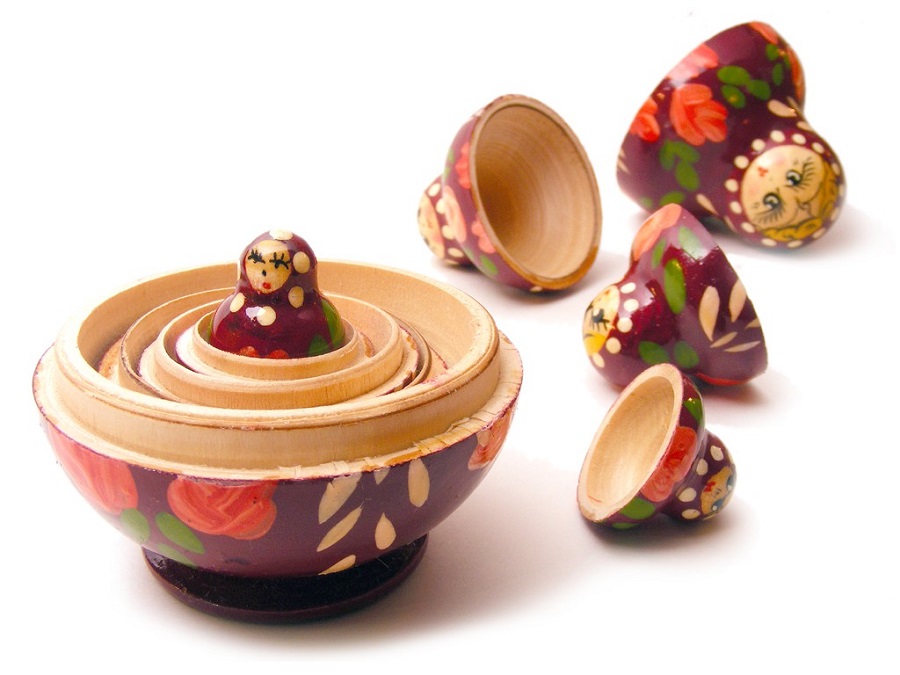
And yet, the beginning was elsewhere
Matryoshka dolls, or Babushkas as they are known, have long since become more than just a children's toy. They have become a symbol of the country, Russia, just as wooden clogs have come to be more than just footwear for the people in the villages, but also a symbol of the Netherlands. They are bought as souvenirs, used to make jokes about political figures, and old ones are sought after and bought by collectors.
But the idea of dolls coming out of each other is not a Russian one. Nor, in fact, of objects of the same kind placed inside each other. The first such objects were made in China more than 1000 years ago. They were smaller and smaller boxes that were stored inside each other. The first dolls based on the idea of boxes coming out of each other were also made in China around 1200.
From China the idea immediately reached Japan and was the basis of the Shichi-Fukujin dolls - the 7 Gods of Fortune. The largest doll embodied Fukurojuro - the god of happiness and longevity. From it emerged 6 smaller and smaller figures, each representing a different god of good fortune.
The "Birth" of Matryoshka in Russia
The Russians also have a legend that the first dolls were made by a Russian monk. He is said to have been inspired by the story of a golden statue of the god Jumala worshipped by people living at the foot of the Ural mountains. At some point this statue opened up and other smaller gods emerged from it.
But the truth is different. It all started when a Shichi-Fukujin doll caught the eye of the wife of Savva Mamontov, a wealthy Russian art lover from Moscow. Mamontov surrounded himself with artists whose creations were based on Russian folk art. Wanting to preserve national identity and traditional culture, Mamontov set up the Children's Education Workshop where artists were encouraged to make puppets for children using Russian folk themes.
The artist Sergei Maliutin also took part in the workshop. One day Maliutin overheard Mamontov's wife talking about Japanese Shichi-Fukujin dolls. That's how he came up with the idea of dolls depicting Russian folk costumes. The idea of the object within an object was not new in Russia, Faberge being the one who in 1885 created an egg that had a yolk with a hen inside.
Maliutin took the idea of dolls inside each other and turned it into a symbol. The first doll was carved in lime wood by V.Zveidochin and painted by Maliutchin himself. There were 8 pieces, the big one with 7 smaller and smaller ones in it. They represented 6 girls and a boy painted with symbols of village people: scythe, cloche, bowls. The smallest doll was a baby wearing nappies. This set of dolls still exists today and is in the Museum of Toys in Zagorsk.
The name chosen was Matrioshka, an allusion to the name Matriona, very popular in the villages at that time. But it wasn't chosen for its popularity alone. It has its roots in the word 'mater', Latin for mother, and is very appropriate to illustrate a mother figure with a brooch and apron from which other smaller figures emerge, just as a mother gives birth to children.
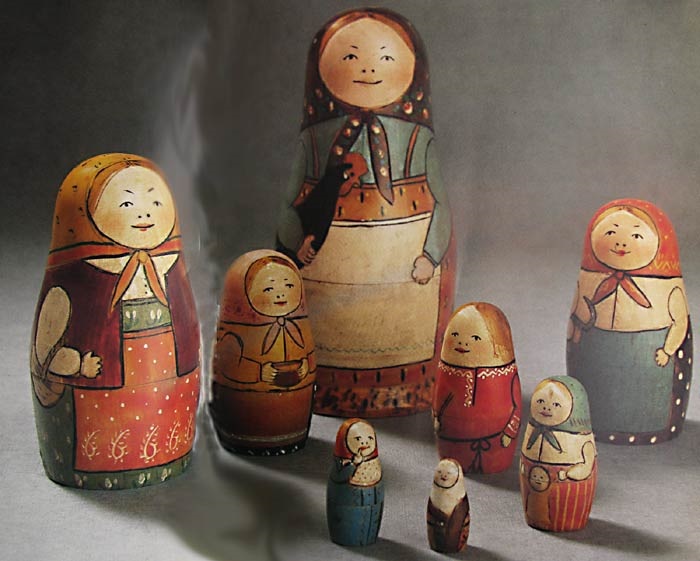
Craftsmen still make dolls today as they were made more than 100 years ago
From the very beginning, the question of which wood is the most suitable for such a toy was raised. It had to have fine grain, retain its shape over time and adapt well to any climate. The Matryoshka could be transported to different parts of Russia, with very different temperatures and humidity. It had to be a durable wood, but at the same time easy to work and shape without cracking during or after work. The best choice turned out to be lime wood, which is still used today. Few other woods are used.
It can take up to 3 years from the time the tree is cut down until the doll is ready. After felling, the trunk is stripped of branches, stripped of bark and prepared to dry for 1-3 years. The preparation helps the water to drain away slowly and the wood not to crack or change colour.

When reached equilibrium pieces of different sizes are cut according to the size of the dolls. For a set containing 5 dolls you need 9 pieces of wood, 8 halves and one whole. The wood is machined on the lathe and brought to the desired shape and size.
What is interesting is that even now folk craftsmen work the dolls without measuring them to make sure they fit inside each other. They measure them "by eye" as they say. They start with the size of one of them as a reference and approximate the sizes of the others. The funny thing is that they fit every time. Such a craftsman can process 50 pieces a day, or about 50 Matryoshka sets a week.
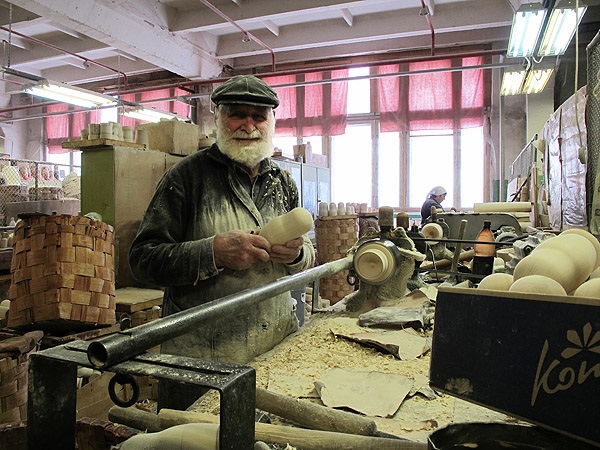
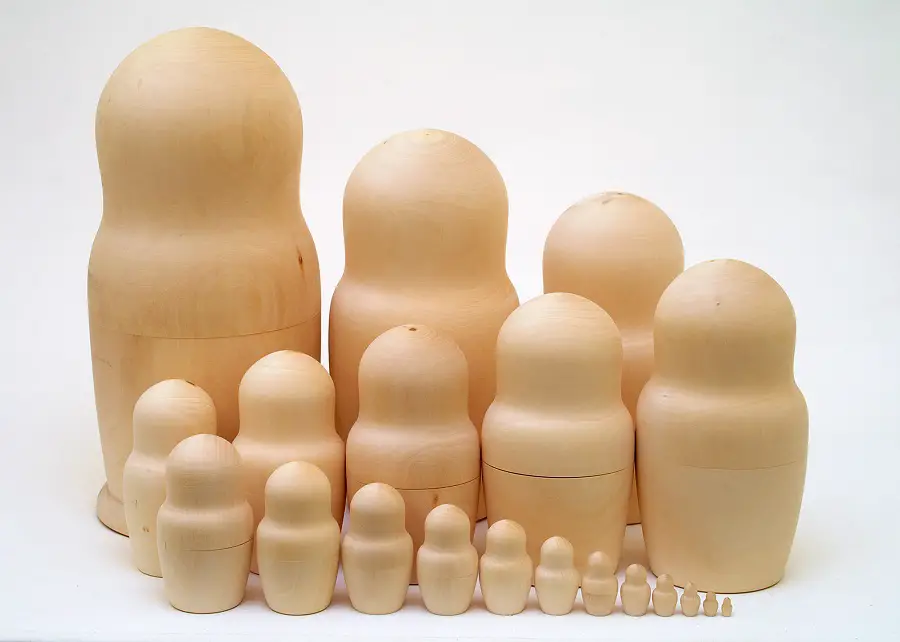
Decorating dolls
Classic dolls are still painted using popular motifs: beads, aprons, tools, flowers, birds. Although the idea was born in Moscow, the place where they were produced from the beginning was Serghiev Posad, a town 80 km north-east of Moscow. It was here that the first wooden Matryoshka dolls were made and presented to the world at the Paris International Exhibition in 1900.
Semionov is another famous place for Matryoshka dolls. Located 500 km north-east of Moscow, in an area full of forests, Semionov's dolls are different from the others as they are painted in a style specific to the area. The symbols used are bushes, berries and forest birds. Everything is full of colour, with the women painted wearing red or yellow beanies. The most common motif on aprons is the red rose. The painter is said to have complete freedom in decorating the dolls so no two sets are painted alike. The wood used to make the Semyonov Matryoshka dolls is mesteacan.
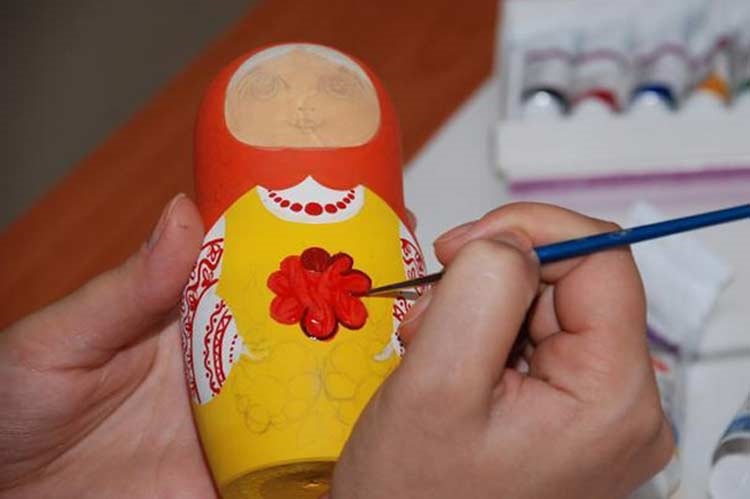
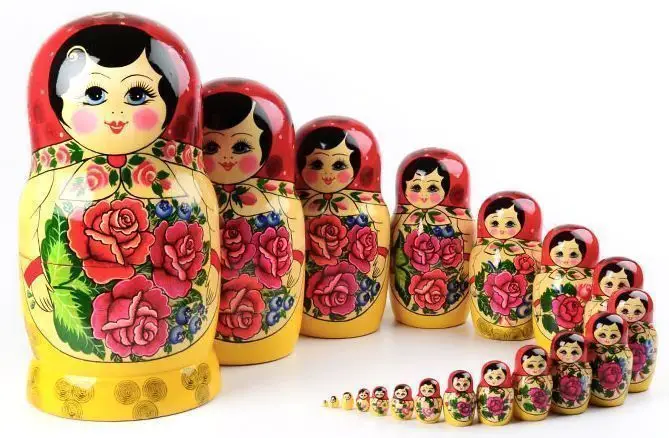
Symbol of Russia, often used to mark an important anniversary or even to make innocent jokes
Matryoshka now represents not only village life, the grandmother in the country with her daughter and granddaughter. The symbol is often used to mark events. For example, on the occasion of the 100th anniversary of the victory against France, a doll was made in Serghiev Posad, representing Marshal Mikhail Kutusov. The doll unfolded revealing other military leaders who took part in the famous battle.
Matryoshka has long since gone beyond village borders to represent cartoon characters, modern heroes, actors and even political leaders. The latter are even used as the subject of more or less acid jokes. The symbol remains, however, the Matryoshka with brooch and apron, more or less adorned with roses, birds, tools or berries.
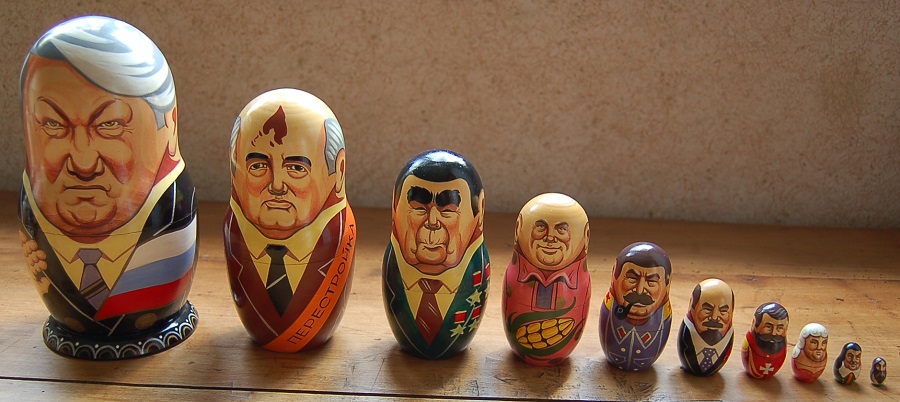
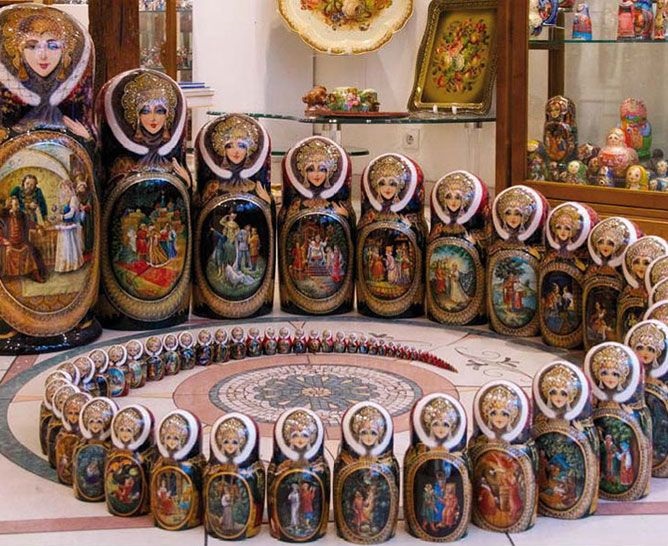






























Thanks for posting!
And we thank you for reading them! 🙂